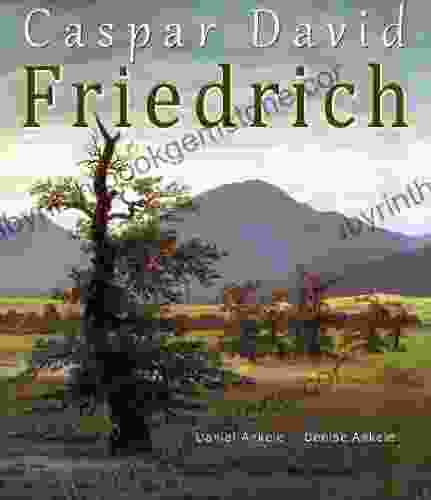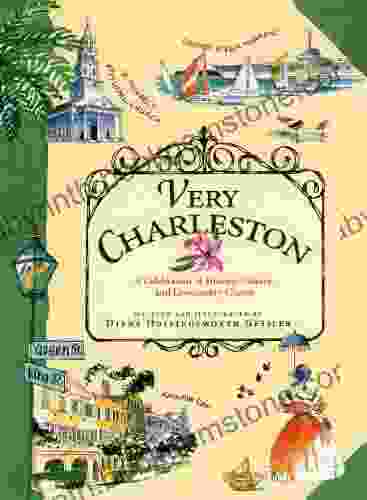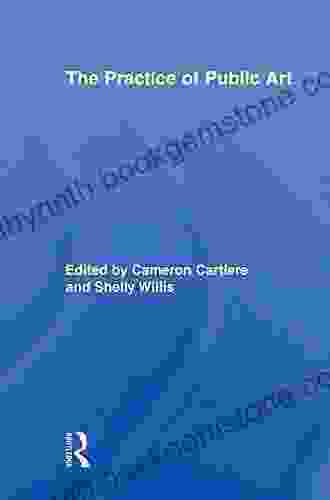Caspar David Friedrich: Exploring the Depths of Romanticism and Symbolism Through 75 Masterpieces

: Unveiling the Enigma of Caspar David Friedrich
Caspar David Friedrich (1774-1840) stands as a pivotal figure in the history of art, renowned for his exquisite landscapes that embody the essence of Romanticism. A master of symbolism, Friedrich's paintings evoke profound emotions, inviting viewers to contemplate the sublime vastness of nature and the introspective depths of the human soul. This comprehensive article delves into the life, artistic style, and iconic works of Caspar David Friedrich, exploring 75 of his most remarkable paintings that have captivated audiences worldwide.
Friedrich was born on September 5, 1774, in Greifswald, Germany. His father, a candlemaker, died when Friedrich was only seven years old, leaving his mother and six siblings to fend for themselves. Despite the challenges of his upbringing, Friedrich's passion for art ignited early on, nurtured by his elder brother, Christian, who was a landscape painter.
Friedrich spent his formative years immersed in the natural beauty of his surroundings. The rugged landscapes of the Baltic Sea, with its towering cliffs and atmospheric skies, left a lasting impression on his artistic sensibilities. Friedrich's fascination with nature was further fueled by the writings of poets and philosophers such as Goethe, Schiller, and Kant, who emphasized the importance of individual experience and the sublime power of nature.
4.5 out of 5
| Language | : | English |
| File size | : | 4830 KB |
| Text-to-Speech | : | Enabled |
| Screen Reader | : | Supported |
| Print length | : | 84 pages |
| Lending | : | Enabled |
Friedrich's paintings are characterized by their meticulous attention to detail, atmospheric lighting, and masterful use of symbolism. He often depicted solitary figures dwarfed by vast landscapes, creating a sense of awe and contemplation. His palette was typically muted, with shades of gray, brown, and green dominating his canvases.
One of Friedrich's most distinctive techniques was his use of the Rückenfigur, or "back figure." This device involved placing a solitary figure with its back turned to the viewer, gazing out at the expansive landscape. This technique effectively distanced the viewer from the scene, creating a sense of isolation and introspection.
Friedrich's paintings explore a range of profound themes that resonated deeply with the Romantic era. These themes include:
- The Sublime: Friedrich's landscapes often portrayed the overwhelming grandeur of nature, evoking feelings of awe and insignificance in the viewer.
- Nature as a Symbol: Friedrich imbued natural elements with symbolic meanings. Trees represented life and growth, mountains symbolized eternity, and water was often used to convey emotions or spiritual states.
- Humanity and Nature: Friedrich's paintings highlighted the relationship between human beings and their natural surroundings. His solitary figures often reflected the Romantic ideal of the individual's search for meaning and connection amidst the vastness of nature.
- Mortality and Transcendence: Friedrich's work is infused with a sense of mortality and the transience of life. However, it also hints at a longing for transcendence and the possibility of a spiritual realm beyond the physical world.
Friedrich's oeuvre consists of a vast collection of paintings, each one a testament to his artistic brilliance. Here are 75 of his most iconic works that exemplify his unique style and profound symbolism:
- The Wanderer above the Sea of Fog (1818): A solitary figure stands on a rocky ledge, overlooking a swirling sea of fog. The Rückenfigur technique creates a sense of isolation and introspection, while the sublime vastness of nature underscores the frailty of human existence.
- Chalk Cliffs on Rügen (1818): This painting depicts an awe-inspiring view of towering white cliffs rising out of the sea. The use of light and shadow emphasizes the grandeur of nature and its power to evoke both wonder and fear.
- The Cross in the Mountains (1808): A small cross stands atop a distant mountain, symbolizing hope and redemption in the face of a desolate and unforgiving landscape.
- The Chasseur in the Forest (1814): A lone hunter stands in a deep forest, his rifle raised as if to seize the viewer's attention. The dense vegetation and muted colors create a sense of mystery and anticipation.
- The Abbey in the Oakwood (1809-1810): An ancient abbey is partially hidden amidst a dense grove of trees, evoking a sense of timelessness and the enduring power of nature.
- Winter Landscape (1811): A stark and somber winter scene depicts a frozen river and barren trees, conveying a sense of loneliness and the relentless passage of time.
- Moonrise over the Sea (1822): The moon casts an ethereal glow over a tranquil sea, creating a sense of serenity and contemplation.
- Shipwreck off the Coast (1824): A dramatic depiction of a tempestuous sea with a ship struggling to stay afloat, symbolizing the fragility of human endeavors and the power of nature.
- Sea Ice (1826): A vast expanse of sea ice stretches out before the viewer, creating a frozen and inhospitable landscape.
- The Giant Mountains (1830-1835): A panoramic view of the majestic Giant Mountains, emphasizing the overwhelming grandeur of nature and its ability to inspire awe.
- The Stages of Life (1835): A series of five paintings depicting different stages of life, from childhood to old age, reflecting on the cyclical nature of human existence.
- The Watcher (1818): A solitary figure stands on a hilltop, surveying a vast landscape below. The Rückenfigur technique enhances the sense of isolation and contemplation.
- Morning in the Riesengebirge (1824-1825): A serene depiction of a mountain sunrise, with the warm glow of light illuminating the surrounding peaks.
- Moonlit Night (1830): A poetic and dreamlike landscape with a full moon illuminating a calm sea and distant hills.
- Woman at a Window (1822): A solitary woman stands at an open window, gazing out at a distant landscape. The painting evokes a sense of longing and contemplation.
- Man and Woman Contemplating the Moon (1820): A couple stands on the shore, gazing up at the moonlit sky. The painting symbolizes the power of nature to inspire shared emotions.
- The Poet (1820): A solitary figure sits on a rock, lost in thought. The painting captures the Romantic ideal of the artist as a visionary and contemplator of nature.
- The Tempest (1809): A stormy sea rages beneath a dramatic sky, symbolizing the power of nature to unleash both destruction and awe.
- The Tree of Life (1829): A dead tree stands amidst a lush forest, representing the fragility of life and the enduring power of nature.
- The Raven (1820): A solitary raven perches on a dead branch, symbolizing death and the transience of life.
- The Oaks (1822): A group of ancient oaks stand tall in a clearing, symbolizing strength, longevity, and the resilience of nature.
- The Cross in the Wilderness (1815): A simple wooden cross stands in a desolate landscape, surrounded by barren trees. The painting evokes feelings of isolation and the search for spiritual meaning.
- The Old City Gate (1817): An ancient city gate leads into a dense forest, symbolizing the transition from the familiar to the unknown.
- The Harbor at Greifswald (1817): A tranquil depiction of a harbor with sailboats moored and people going about their daily lives.
- The Birdcatcher (1812): A solitary birdcatcher stands in a meadow, surrounded by a flock of birds. The painting represents man's attempt to capture and control nature.
- The Foggy Ravine (1812): A mysterious and atmospheric ravine is enveloped in fog, creating a sense of uncertainty and the unknown.
- The Mill (1812): A watermill stands at the edge of a forest, symbolizing industry and human intervention in nature.
- The Large Enclosure (1813): A vast and desolate landscape is enclosed by a tall fence, representing confinement and the limitations of human existence.
- The Mondnebel (Moon Mist) (1819): A moonlit
4.5 out of 5
| Language | : | English |
| File size | : | 4830 KB |
| Text-to-Speech | : | Enabled |
| Screen Reader | : | Supported |
| Print length | : | 84 pages |
| Lending | : | Enabled |
Do you want to contribute by writing guest posts on this blog?
Please contact us and send us a resume of previous articles that you have written.
 Best Book
Best Book Page Flip
Page Flip Bookshelf
Bookshelf Literary loom
Literary loom Chapter
Chapter Bookish
Bookish PageTurner
PageTurner Bibliophile
Bibliophile Story
Story Inkwell
Inkwell Bookworm
Bookworm Labyrinth
Labyrinth Plot Twist
Plot Twist Prose
Prose Paperback
Paperback Storyteller
Storyteller Sanctuary
Sanctuary Fiction
Fiction Reading
Reading Chronicle
Chronicle Read
Read Dahlma Llanos Figueroa
Dahlma Llanos Figueroa Domnica Radulescu
Domnica Radulescu Rory Miller
Rory Miller Todd Geers
Todd Geers Minal Hajratwala
Minal Hajratwala M R Forbes
M R Forbes Joe Starita
Joe Starita Jeanne Farr Mcdonnell
Jeanne Farr Mcdonnell Lan Sluder
Lan Sluder Marc Taro Holmes
Marc Taro Holmes Steve Biddle
Steve Biddle Brandon Q Morris
Brandon Q Morris D J Bodden
D J Bodden Melissa Stephenson
Melissa Stephenson D Dauphinee
D Dauphinee Marcus Richardson
Marcus Richardson Cynthia Saltzman
Cynthia Saltzman Conn Iggulden
Conn Iggulden Nancey Cummings
Nancey Cummings Irene Levin Berman
Irene Levin Berman Matthew Quirk
Matthew Quirk Love Belvin
Love Belvin Nathan D Horowitz
Nathan D Horowitz Brad Olsen
Brad Olsen Marc Canter
Marc Canter S M Anderson
S M Anderson Geoff Saunders
Geoff Saunders Crypto Dukedom
Crypto Dukedom Nick Jans
Nick Jans Craig Briggs
Craig Briggs Marie Brennan
Marie Brennan S A Snyder
S A Snyder Curatoria Draconis
Curatoria Draconis James Rosenquist
James Rosenquist Olivia Campbell
Olivia Campbell Olan Thorensen
Olan Thorensen Eleanor Ford
Eleanor Ford John Humphries
John Humphries Daniel Burleigh Parkhurst
Daniel Burleigh Parkhurst Gina Yashere
Gina Yashere Julissa Arce
Julissa Arce J Z Foster
J Z Foster Craig W Stanfill
Craig W Stanfill Henry James
Henry James G B Edwards
G B Edwards Massimiliano Musina
Massimiliano Musina Nawoko
Nawoko Connie Mcbride
Connie Mcbride Eat Like A Local
Eat Like A Local Margaret Coker
Margaret Coker Marisol Enchufa
Marisol Enchufa Steve Huston
Steve Huston Terry Darlington
Terry Darlington Dan Sugralinov
Dan Sugralinov Garry Mcgee
Garry Mcgee Jake Spicer
Jake Spicer D Scott Bowers
D Scott Bowers Niall Teasdale
Niall Teasdale Ward Larsen
Ward Larsen Sarena Ulibarri
Sarena Ulibarri Jessica Kerwin Jenkins
Jessica Kerwin Jenkins Myriam Gurba
Myriam Gurba Liza Rodman
Liza Rodman Kelly Gay
Kelly Gay Issa Rae
Issa Rae Carl Sagan
Carl Sagan Paula Giddings
Paula Giddings J A Johnstone
J A Johnstone Yuri Ulengov
Yuri Ulengov Terri Kozlowski
Terri Kozlowski Jeff Tanyard
Jeff Tanyard Karen O Brien
Karen O Brien Loretta Outwater Cox
Loretta Outwater Cox Hyeonseo Lee
Hyeonseo Lee Colson Whitehead
Colson Whitehead Pat Grillo
Pat Grillo Maggie Rowe
Maggie Rowe Ann Fessler
Ann Fessler J Robert Kennedy
J Robert Kennedy Cody Whitfill
Cody Whitfill James Patterson
James Patterson J J Green
J J Green Coert Voorhees
Coert Voorhees Ted Andrews
Ted Andrews Leslie Cabarga
Leslie Cabarga Stephen Brooks
Stephen Brooks Maham Johnson
Maham Johnson Michael Henry
Michael Henry Deanna Amodeo
Deanna Amodeo Mary Paik Lee
Mary Paik Lee Danny Trejo
Danny Trejo Beverly Jenkins
Beverly Jenkins Susan Cross
Susan Cross Fred Ladd
Fred Ladd Nigel Barley
Nigel Barley Lisanne Norman
Lisanne Norman Julia Chiles
Julia Chiles Torre Deroche
Torre Deroche James Alan Gardner
James Alan Gardner Robert Silverberg
Robert Silverberg William Powers
William Powers Ian Frazier
Ian Frazier D Ward Cornell
D Ward Cornell Trenae
Trenae Scott Moon
Scott Moon Karen Cheung
Karen Cheung Blair Polly
Blair Polly Mitsuo Kure
Mitsuo Kure Cornelius Tacitus
Cornelius Tacitus Eric Musgrave
Eric Musgrave Ian Douglas
Ian Douglas Tom Geng
Tom Geng Sara Ackerman
Sara Ackerman Rebecca Hardiman
Rebecca Hardiman Andrew Patrick Nelson
Andrew Patrick Nelson Roy Simmons
Roy Simmons Eric Lax
Eric Lax Joy Deja King
Joy Deja King Pierre Alex Jeanty
Pierre Alex Jeanty Jim Hutchinson
Jim Hutchinson Tim Vernooij
Tim Vernooij Grace Barrington Shaw
Grace Barrington Shaw David W Galenson
David W Galenson Emma Larkin
Emma Larkin Iris Apfel
Iris Apfel Natasha Sims
Natasha Sims Daniel Abraham
Daniel Abraham Sasha Duerr
Sasha Duerr Damion Hunter
Damion Hunter Colin Jones
Colin Jones Dale Brown
Dale Brown Donna Zakowska
Donna Zakowska Tom Satterly
Tom Satterly Sarah Jackson
Sarah Jackson Philip Simmons
Philip Simmons Jeromy Hopgood
Jeromy Hopgood Sarah Culberson
Sarah Culberson R P Jones
R P Jones D J Holmes
D J Holmes Eva Heller
Eva Heller Jeffrey Alford
Jeffrey Alford Ernest J Gaines
Ernest J Gaines Co Spinhoven
Co Spinhoven Colin Thubron
Colin Thubron Faye Moskowitz
Faye Moskowitz Colin Souness
Colin Souness David Maraniss
David Maraniss Cornelius N Grove
Cornelius N Grove Steve Reifenberg
Steve Reifenberg Keith Recker
Keith Recker Steven Collins
Steven Collins Daniel L Bray
Daniel L Bray J C Romero
J C Romero Jennifer Thompson Cannino
Jennifer Thompson Cannino Collins Dictionaries
Collins Dictionaries Jennifer M Eaton
Jennifer M Eaton Henry Koster
Henry Koster Joshua M Greene
Joshua M Greene Michelle Brown
Michelle Brown David Bischoff
David Bischoff Rayna Tyler
Rayna Tyler David Drake
David Drake Warren Murphy
Warren Murphy Zeena Shah
Zeena Shah Danica Roem
Danica Roem Sujean Rim
Sujean Rim Robert Isenberg
Robert Isenberg Dennis Lehane
Dennis Lehane Marie Killilea
Marie Killilea Tom Hill
Tom Hill William Schoell
William Schoell Jason Cochran
Jason Cochran Isabella Maldonado
Isabella Maldonado Hayley Stone
Hayley Stone Michael Shnayerson
Michael Shnayerson Joan Didion
Joan Didion Craig Ferguson
Craig Ferguson Dick J Reavis
Dick J Reavis Ellie Taylor
Ellie Taylor Fethi Mansouri
Fethi Mansouri Frances Dinkelspiel
Frances Dinkelspiel Coryne Hall
Coryne Hall Jon May
Jon May Cynthia Newcomer Daniel
Cynthia Newcomer Daniel Cynthia Royce
Cynthia Royce Mike Katz
Mike Katz Gina Mckinnon
Gina Mckinnon Nicolas Lampert
Nicolas Lampert Les Standiford
Les Standiford Mark Cramer
Mark Cramer Michelle L Hardy
Michelle L Hardy Cp Mchugh
Cp Mchugh Norman Hathaway
Norman Hathaway David Mikics
David Mikics Joshua T Calvert
Joshua T Calvert Craig Martelle
Craig Martelle T D Lake
T D Lake Cookie Johnson
Cookie Johnson T R Napper
T R Napper Karen Mcnally
Karen Mcnally T Scott Bryan
T Scott Bryan Diana Hollingsworth Gessler
Diana Hollingsworth Gessler C F Jernigan
C F Jernigan Margaret Fletcher
Margaret Fletcher Pat Kramer
Pat Kramer Darren Critchley
Darren Critchley George Saunders
George Saunders Kristina Evans
Kristina Evans Jodi Picoult
Jodi Picoult Virginia Matheson Hooker
Virginia Matheson Hooker Crispin Sartwell
Crispin Sartwell Denise Hamilton
Denise Hamilton Luca Turin
Luca Turin Harvey J Kaye
Harvey J Kaye Irving Layton
Irving Layton Karen Stocker
Karen Stocker Tana Stone
Tana Stone Yunte Huang
Yunte Huang Ronald G Knapp
Ronald G Knapp Cyn Alexander
Cyn Alexander Clyde D Souza
Clyde D Souza Kyle Widner
Kyle Widner Laura Donnelly Bethmann
Laura Donnelly Bethmann James Rubik
James Rubik Meredith Little
Meredith Little Maya Angelou
Maya Angelou Dakota Krout
Dakota Krout Kenya Clark
Kenya Clark James Seabright
James Seabright Mia Michaels
Mia Michaels Sam Branson
Sam Branson Gerry Virtue
Gerry Virtue Rami Yelda
Rami Yelda Lisa Yaszek
Lisa Yaszek L A Braun
L A Braun Coralie Bickford Smith
Coralie Bickford Smith Dallen J Timothy
Dallen J Timothy Taylor Fuller
Taylor Fuller Sandee Cohen
Sandee Cohen Janet Koplos
Janet Koplos Victor Villasenor
Victor Villasenor Marya Hornbacher
Marya Hornbacher Scott Kenemore
Scott Kenemore David G Hartwell
David G Hartwell Lin Wellford
Lin Wellford David Riley
David Riley Jason M Hough
Jason M Hough Eddie Robson
Eddie Robson Carrie Stuart Parks
Carrie Stuart Parks D K Holmberg
D K Holmberg Helen Armstrong
Helen Armstrong Piera Sonnino
Piera Sonnino Jeremy Ford
Jeremy Ford Tracy Lambert
Tracy Lambert Max Allan Collins
Max Allan Collins R Allen Chappell
R Allen Chappell Amaya Black
Amaya Black Tony Pike
Tony Pike Dennis Valder
Dennis Valder Elizabeth May
Elizabeth May Dawn Turner Trice
Dawn Turner Trice Gerald Everett Jones
Gerald Everett Jones Kati Marton
Kati Marton Khadizhat Witt
Khadizhat Witt Tim Judah
Tim Judah Kristina Mcmorris
Kristina Mcmorris Yutaka Yazawa
Yutaka Yazawa Daigo Murasaki
Daigo Murasaki Kathryn Mcmaster
Kathryn Mcmaster Karl Johnson
Karl Johnson Neal Stephenson
Neal Stephenson John Dennehy
John Dennehy Cyril W Beaumont
Cyril W Beaumont Cornelius C Kubler
Cornelius C Kubler Jane Sutcliffe
Jane Sutcliffe Douglas Century
Douglas Century Colleen Hall
Colleen Hall Fiona Ferris
Fiona Ferris Jerry Brotton
Jerry Brotton Leonard S Marcus
Leonard S Marcus Jon Breakfield
Jon Breakfield Dan Gheno
Dan Gheno Karolyn Kiisel
Karolyn Kiisel D K Pike
D K Pike Nancy Marchant
Nancy Marchant Marko Kloos
Marko Kloos Robert E Innis
Robert E Innis Jacques D Amboise
Jacques D Amboise Alexa West
Alexa West John Logan
John Logan Irene Aylworth Douglass
Irene Aylworth Douglass Dalai Lama
Dalai Lama Olivia Dade
Olivia Dade Lorne Ryburn
Lorne Ryburn Yair Lapid
Yair Lapid Nick Lyons
Nick Lyons Tinia Montford
Tinia Montford Synithia Williams
Synithia Williams Craig A Falconer
Craig A Falconer John Baxter
John Baxter Insun Lee
Insun Lee Sue Monk Kidd
Sue Monk Kidd Clive Cussler
Clive Cussler Ingrid Sischy
Ingrid Sischy Xinran
Xinran Reprint Edition Kindle Edition
Reprint Edition Kindle Edition Dale Robinson
Dale Robinson Wade Motawi
Wade Motawi Roberto Pedreira
Roberto Pedreira Dallas Shaw
Dallas Shaw Bob Martin
Bob Martin Chris Strodder
Chris Strodder Prince
Prince Danielle Krysa
Danielle Krysa Dan Zehr
Dan Zehr Coryn Anaya Clarke
Coryn Anaya Clarke Donald Spoto
Donald Spoto Connie Malamed
Connie Malamed Gene Wolfe
Gene Wolfe Yoko Hatta
Yoko Hatta Corky Parker
Corky Parker Clayton Thomas Muller
Clayton Thomas Muller Harold P Howard
Harold P Howard P A Piatt
P A Piatt Cristela Alonzo
Cristela Alonzo Steven Skaggs
Steven Skaggs Fiona Davis
Fiona Davis Stephen Kinzer
Stephen Kinzer Edward Johnston
Edward Johnston Kate Moore
Kate Moore Yuriko Saito
Yuriko Saito Deborah Davis
Deborah Davis Grace Goodwin
Grace Goodwin Gerda Weissmann Klein
Gerda Weissmann Klein Lisa Morton
Lisa Morton Helen Augur
Helen Augur Nick Snelling
Nick Snelling Mancho Soto
Mancho Soto Hannah Strong
Hannah Strong Cricut Maker
Cricut Maker W B Yeats
W B Yeats John Luther Adams
John Luther Adams Karen Swan
Karen Swan Sarah Thornton
Sarah Thornton Tony Rafael
Tony Rafael Lorraine Bartlett
Lorraine Bartlett Theo Dorgan
Theo Dorgan Eric Trueheart
Eric Trueheart V D Bucket
V D Bucket Cora Tesheira
Cora Tesheira Luis Alberto Urrea
Luis Alberto Urrea Harry Lorayne
Harry Lorayne Thrive Language Audiobooks
Thrive Language Audiobooks Megan Lynch
Megan Lynch Cynthia Leal Massey
Cynthia Leal Massey John Paul Brammer
John Paul Brammer True Kelley
True Kelley Eric Jerome Dickey
Eric Jerome Dickey David Walton
David Walton Lee Feigon
Lee Feigon Joy Castro
Joy Castro Culture Smart
Culture Smart Robert Appleton
Robert Appleton Baby Professor
Baby Professor Frank Bruni
Frank Bruni Dan X Solo
Dan X Solo Mark Bourrie
Mark Bourrie Diane Cardaci
Diane Cardaci Parvati Sharma
Parvati Sharma Daily Language Learning
Daily Language Learning Mary Boone
Mary Boone Susan Linden Emde
Susan Linden Emde Dan Grunfeld
Dan Grunfeld Sean Williams
Sean Williams Ursula K Le Guin
Ursula K Le Guin John Mcwade
John Mcwade Clifford Irving
Clifford Irving Stephen Armstrong
Stephen Armstrong Marius Kociejowski
Marius Kociejowski T J S George
T J S George Ernst Bergen
Ernst Bergen Lina Rather
Lina Rather Graham Wilson
Graham Wilson Serena Gilbert
Serena Gilbert Thaddeus Carhart
Thaddeus Carhart Connie Willis
Connie Willis Sean Egan
Sean Egan Linda Riesenberg Fisler
Linda Riesenberg Fisler Bill Geist
Bill Geist Ronald Pratt
Ronald Pratt Dan Popp
Dan Popp Michelle Damiani
Michelle Damiani David Kroese
David Kroese Donna Jackson Nakazawa
Donna Jackson Nakazawa Mark Dawson
Mark Dawson Gianrico Carofiglio
Gianrico Carofiglio Grady Hendrix
Grady Hendrix Richard East
Richard East Jerry Beck
Jerry Beck Jordan Matter
Jordan Matter Craig Johnson
Craig Johnson Pearl Tate
Pearl Tate Cyrus Highsmith
Cyrus Highsmith Julie Lythcott Haims
Julie Lythcott Haims Jaclyn Bailie
Jaclyn Bailie Carlos M N Eire
Carlos M N Eire Ron Celano
Ron Celano Kirstin Dow
Kirstin Dow Jay Ryan
Jay Ryan Cristina Salat
Cristina Salat L E Modesitt Jr
L E Modesitt Jr William J Burns
William J Burns Em Brown
Em Brown Dan Bigley
Dan Bigley Courtney Ragsdale
Courtney Ragsdale Robert De La Sizeranne
Robert De La Sizeranne Mia Black
Mia Black Kevin J Anderson
Kevin J Anderson Peter Hanson
Peter Hanson Barrington Barber
Barrington Barber Gabrielle Selz
Gabrielle Selz Hannah Hart
Hannah Hart Sean Hartlieb
Sean Hartlieb Cynthia Clampitt
Cynthia Clampitt Thefirstdefier
Thefirstdefier Nelson Demille
Nelson Demille Dk Eyewitness
Dk Eyewitness Roy Kinnard
Roy Kinnard Michael Reardon
Michael Reardon Saad Z Hossain
Saad Z Hossain Criss Angel
Criss Angel Xiaolu Guo
Xiaolu Guo Porochista Khakpour
Porochista Khakpour Dan Simmons
Dan Simmons Laurent Dubois
Laurent Dubois Elizabeth Reid
Elizabeth Reid Jay C Labarge
Jay C Labarge Wyclef Jean
Wyclef Jean Dani Dyer
Dani Dyer Craig Carey
Craig Carey Tc Manning
Tc Manning Cristy C Road
Cristy C Road Dan Abnett
Dan Abnett Sheila Montilla
Sheila Montilla Hal Vaughan
Hal Vaughan Yelapa Memo
Yelapa Memo Monika Forsberg
Monika Forsberg Cliff Mass
Cliff Mass John Tanner
John Tanner Jane Hamilton
Jane Hamilton William Evans
William Evans Cory Doctorow
Cory Doctorow Sara Wheeler
Sara Wheeler Dana Sachs
Dana Sachs Explorer Publishing
Explorer Publishing Ella Barrick
Ella Barrick Peter Ninnes
Peter Ninnes Ketut Suasti
Ketut Suasti K C Jones
K C Jones Kristen Britain
Kristen Britain Jeremy Kroeker
Jeremy Kroeker Tom Poland
Tom Poland David E Wilkins
David E Wilkins John Grisham
John Grisham Jennifer Brozek
Jennifer Brozek Dan Fox
Dan Fox Euclides Da Cunha
Euclides Da Cunha Susan Hayes
Susan Hayes Dave Willmarth
Dave Willmarth Gael Berton
Gael Berton Gabrielle Zevin
Gabrielle Zevin Clementina Oluchi Augustine
Clementina Oluchi Augustine Twyla Tharp
Twyla Tharp June Emerson
June Emerson Richard K Morgan
Richard K Morgan Peter Parnell
Peter Parnell Crystal Allen
Crystal Allen Craig Melvin
Craig Melvin Isadora Duncan
Isadora Duncan Jessica Walstad
Jessica Walstad Ben Ohmart
Ben Ohmart Craig Mod
Craig Mod Jeremy Robert Johnson
Jeremy Robert Johnson Henning Nelms
Henning Nelms Douglas Preston
Douglas Preston Diana Friel Mcgowin
Diana Friel Mcgowin Joan D Vinge
Joan D Vinge Dana Facaros
Dana Facaros Dr Quinta
Dr Quinta Dale Pollock
Dale Pollock Ian Whitaker
Ian Whitaker Mary Alice Monroe
Mary Alice Monroe Sue Tabashnik
Sue Tabashnik John Parascandola
John Parascandola Clive Johnson
Clive Johnson Siri Hustvedt
Siri Hustvedt Dan Diggles
Dan Diggles T J Clark
T J Clark Tracey Lange
Tracey Lange Craig Seymour
Craig Seymour Leila Guerriero
Leila Guerriero Janet Catherine Berlo
Janet Catherine Berlo Leah Gallo
Leah Gallo David Cousens
David Cousens Susan Yeates
Susan Yeates Daniel Ankele
Daniel Ankele Dakota James
Dakota James Cookie Mueller
Cookie Mueller
Light bulbAdvertise smarter! Our strategic ad space ensures maximum exposure. Reserve your spot today!
 E.E. CummingsFollow ·13.8k
E.E. CummingsFollow ·13.8k William WordsworthFollow ·13.6k
William WordsworthFollow ·13.6k Justin BellFollow ·13.9k
Justin BellFollow ·13.9k Dillon HayesFollow ·13.8k
Dillon HayesFollow ·13.8k Eugene ScottFollow ·5.8k
Eugene ScottFollow ·5.8k Darius CoxFollow ·12.7k
Darius CoxFollow ·12.7k Paulo CoelhoFollow ·6.7k
Paulo CoelhoFollow ·6.7k Hugo CoxFollow ·4.5k
Hugo CoxFollow ·4.5k

 Billy Peterson
Billy PetersonStackin' Paper Part War Ready: A Comprehensive Guide to...
In today's competitive financial landscape,...
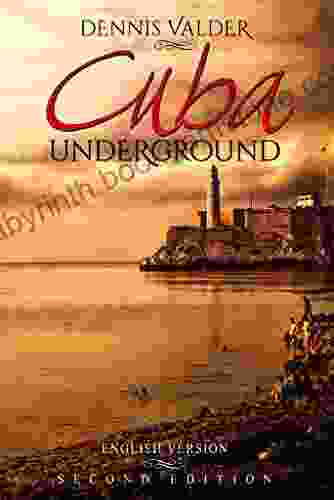
 Jedidiah Hayes
Jedidiah HayesDennis Valder: Unveiling the Enchanting World of Cuba's...
In the heart...

 Ryan Foster
Ryan FosterDelving into the Captivating Enigma of The Green Season...
In the verdant tapestry of literary...
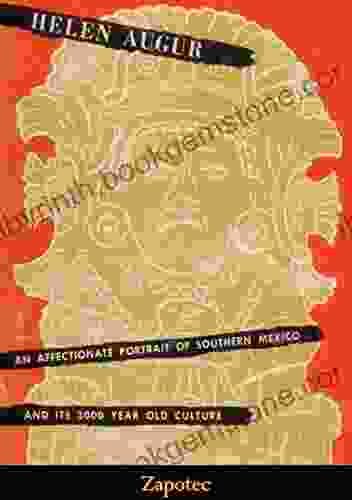
 Jeremy Mitchell
Jeremy MitchellZapotec Helen Augur: A Visionary Leader and Cultural...
In the heart of...

 Larry Reed
Larry ReedSci-Fi Alien Warrior Romance: A Tribute to the Brides of...
In the vast expanse of the...
4.5 out of 5
| Language | : | English |
| File size | : | 4830 KB |
| Text-to-Speech | : | Enabled |
| Screen Reader | : | Supported |
| Print length | : | 84 pages |
| Lending | : | Enabled |


